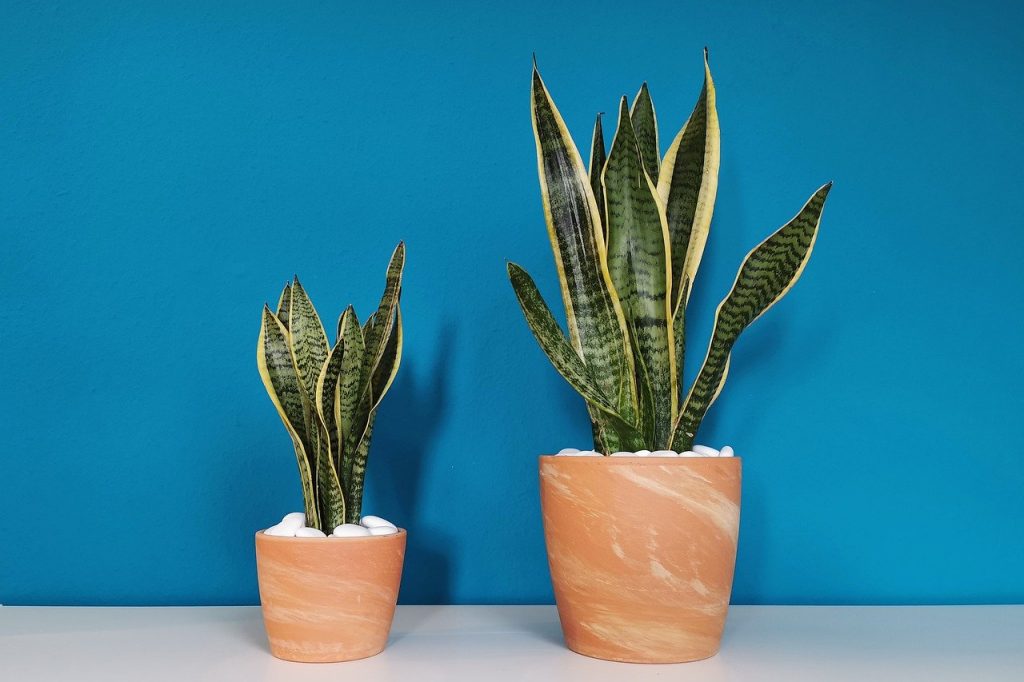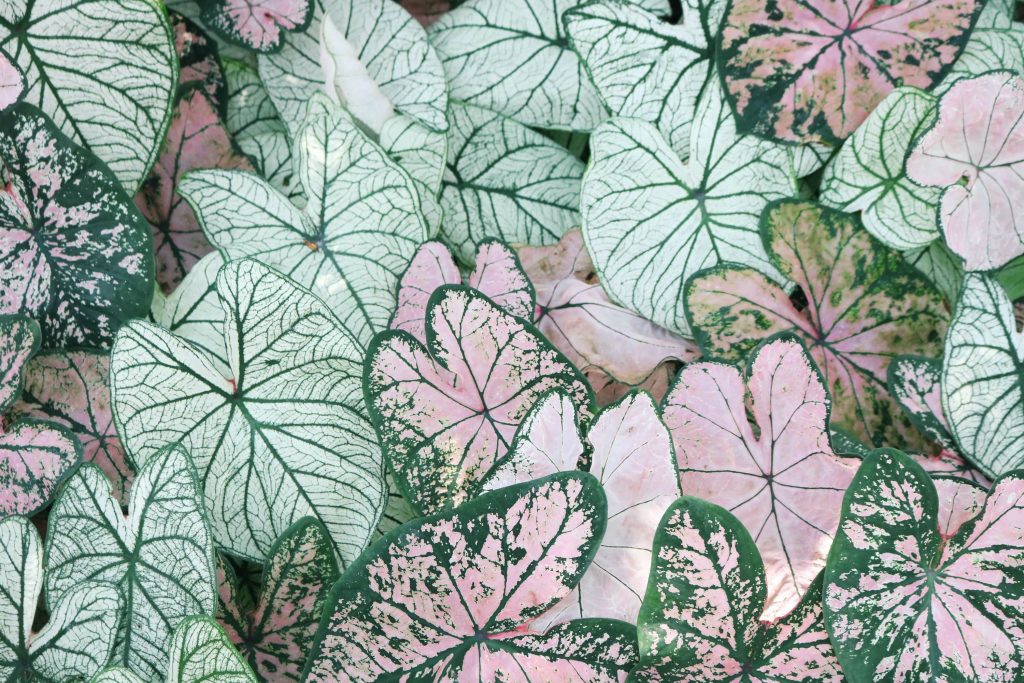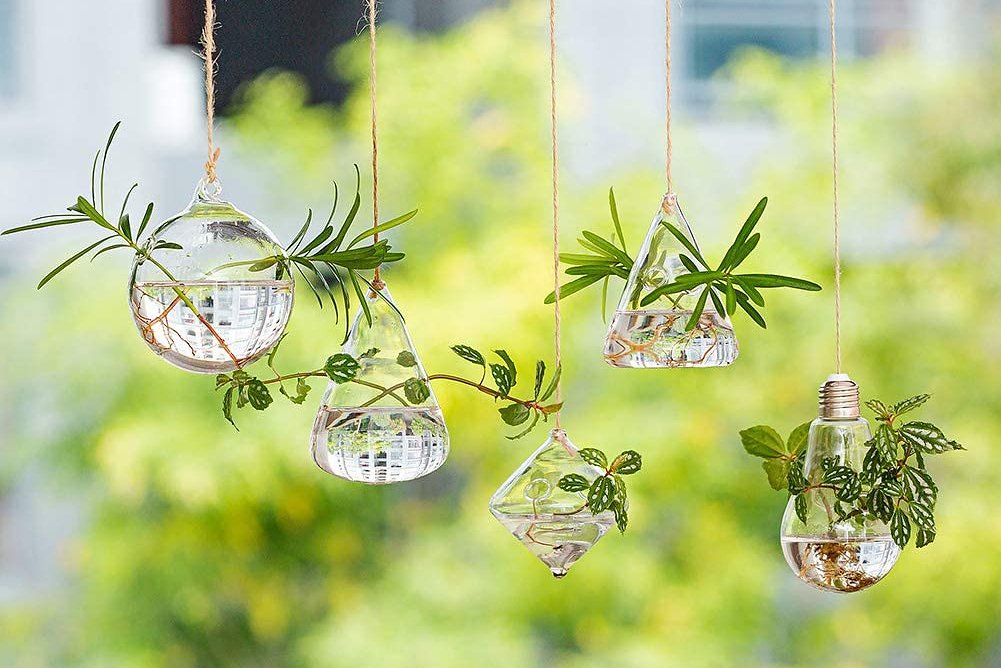Are you interested in getting a houseplant, but don’t know where to start?
For beginners, it can be overwhelming. There are thousands of houseplant species and each of them require different care.
Based on my personal experience, I’ve come up with a list of hard-to-kill plants that are resilient and easy to grow. These are strong plants that can withstand a wide variety of conditions, like irregular watering, uneven light or fluctuating temperatures. I have also included the basic steps to care for these plants.
Here’s a my curated list of the best houseplants for beginners.
Table of Contents
Best Houseplants for Beginners
1. Pothos
The Pothos is one of the most beautiful houseplants I have at home, thanks to the long trailing vines. That is also the reason behind their common name Devil’s Ivy. It’s literally impossible to kill as it barely needs any care and it grows at an astonishing speed. (Read my post on Pothos vs Philodendron to learn how to tell the difference!)
Water: The Pothos does not need regular watering. Always let the soil dry before watering. Watering once a week in summer, and less frequently in winter. You can also propagate a cutting easily as it’s one of those plants that grow in water.
Sunlight: These plants prefer a bright light environment. Else, the leaves lose their color. The more sunlight it gets, the more yellow the leaves turn. I hang mine on the window.
Toxicity: Even though pet animals don’t tend to eat the Pothos, it is toxic for cats and dogs. Thankfully it’s not life-threatening.

2. Monstera Deliciosa
My personal favorite on this list of best beginner houseplants, the Monstera Deliciosa makes a statement with their unique natural holes in their leaves. That’s how it earned the nickname, the Swiss cheese plant. These holes are said to maximize sun fleck capture on the forest floor.
It’s the fastest-growing plant I’ve ever seen. Like its name implies, the plant can grow to monstrous proportions and at lightning speed. Mine tripled in size within a year and best of all, it doesn’t need much to grow this fast. However, as the vining plant grows fast, it needs regular pruning, occasional staking, and trimming (of the roots). You’ll also need to check for pest often as spider mites, mealybugs, and other pests are pretty common for them.
Water: The Monstera just needs water once every two months, and more in spring and summer.
Sunlight: Keep it in a high-humidity area away from direct sun. Too much sun will cause the leaves to burn.
Toxicity: The Monstera is toxic and should be kept out of kids or pets. Tribal people use them as snakebite remedies and basket material.

3. Sansevieria
Another tough-as-nails plant is the Sansevieria, one of the best houseplants for beginners. Again there are many varieties of Sansevieria, with the Sansevieria trifasciata being the most popular. Nicknamed snake plant or mother-in-law’s tongue, it has these distinctive yellow margins and sword-like leaves, that make it such a great decorative plant. It’s also one of the most adaptive houseplants you can get and it needs minimal caring.
Water: The Snake Plant only needs water once in two or three weeks. In winter, once a month is more than enough. My Snake Plant is possibly the strongest plant I have, it has never once wilt or shown any sign of despair.
Sunlight: In nature, it grows really well in dry terrain, even in the desert. Just place it in a bright place under constant sunlight and it’ll thrive. That’s what makes it one of the best indoor plants for beginners. I have mine on my kitchen windowsill, the sunniest spot in the house.
Air purification: It’s also one of the most powerful air purifiers on our list.Besides, these plants are not toxic and animals don’t chew on them. So, they are safe to collect for indoor decoration.

4. Succulents
Succulents are another group of easy plants for beginners as these desert plants store water in their thick fleshy leaves, making them very easy to grow and maintain. There are many varieties of succulents, with some of the most popular being the Crassula Ovata, Echeveria, Agave and Senecio. My personal favorite succulent is the burro’s tail or Sedum morganianum, which as its name implies, has leaves that resemble a donkey’s tail!
Water: One major reason why they’re some of the best plants for beginners is their adaptability. Just water them once every 2-3 weeks. In winter, water them once a month and that is enough.
Sunlight: You have to keep them under bright light for the perfect growth. Some of the variants may need some shade. I hang mine along the stairway with indirect light and it’s thriving.
Toxicity: Fortunately, most succulents are completely harmless to animals. Most animals instinctively avoid eating succulents as they don’t smell or taste very appetizing.

5. Cacti
I can’t write a list of best plants for beginners without including the cactus. Most desert cacti store water in their spines and have little thorns all over them. Usually, they grow on extremely drylands, and that means they barely need any water to survive. Cacti are generally slow-growing and will withstand tremendous abuse.
They do best with bright light, well-drained pots, and little water. Some of the most popular cacti are the Easter cactus, Bunny Ear cactus, Feather cactus, Parodia, and Bishop’s cap.
Water: The cactus need minimal watering and effort. Just water them once every two weeks. In winter, watering once a month would be enough to maintain the growth.
Sunlight: Desert cacti like the Star cactus need strong sunlight. But Easter cactus needs only regular brightness. Research base on the cactus species. I hang all of my cacti on the window.
Toxicity: Even though cacti are not toxic, it can be painful to touch their thorns. Keep them out of reach from both kids and pet animals.

6. Pilea Peperomioides
This was the plant that first got me hooked! The Pilea is known for its bright green, coin-shaped leaves. It grows well in dry conditions, can adapt to low light areas, and are fast-growing, making it one of the best plants for beginners.
Originally from the southwestern Yunnan province of China, the leaves layer on top of each other, giving it the appearance of large green coins — hence its nickname the Chinese Money Plant. This plant is thought to bring good fortune, money, and abundance to its owner, contributing to its popularity as a housewarming or hostess gift.
Water: Allow the soil to dry between waterings, as the Pilea does not like soggy soil. Watch the leaves — when they start to droop, it’s time to water your plant. In warmer weather, they need to be watered around once a week.
Sunlight: Placing these plants is a bit tricky. They can’t tolerate direct sunlight but need proper brightness. The leaves tend to grow toward the sunlight, so make sure you rotate the plant each time you water it to encourage even growth.
Toxicity: This plant is non-toxic for both kids and pets.

7. Dracaena
The Dracaena is so easy to grow it’s impossible to kill. There are various varieties of Dracaena that are suitable for home growth. I particularly like the Dracaena marginata, which look really sharp (no punt intended) with its thin needle-like leaves. It’s no wonder many people call it the dragon tree.
Water: The best part about the Dracaena is that it does’t require regular watering. Water it once in two or three weeks. Honestly I almost never water mine. I just keep an eye on the soil, and only water it when the top half of the soil gets dry. Remember, if the leaves get brown tips then you are overwatering.
Sunlight: It grows faster under bright light and slower in shade. But keep in mind that the Dracaena can’t tolerate direct sunlight. I have mine in my bedroom, next to the wall so it’s in partial shade.
Toxicity: Even though Dracaena is not toxic for the human body, it is highly toxic for pet animals like cats and dogs. Cats unfortunately often love to chew the leaves. you have pets then try to avoid these houseplants.

8. Boston Fern
Boston Fern is one of the best indoor plants for beginners. They are quite eye-catching because of the natural vibrant green color and lush bushy character. In nature, they tend to grow in damp forests, so they do need high humidity to thrive.
Water: You’ll have to water them quite regularly, once a week in summer. Boston Fern prefers slight moisture and will thrive with a plant humidifier. To check their growth, keep an eye on the leaf color.
Sunlight: In terms of caring, the Boston Fern is pretty sensitive to light. These ferns can’t tolerate strong light so it’s best to keep them in partial shade.
Toxicity: As for the toxicity, they are not harmful to pets and kids. So, you can use them anywhere in the indoor space.

9. Philodendron
Another vine plant that’s super easy to care for, the Philodendron is one of the best houseplants for beginners due to their ease of growth. There are more than 450 species of Philodendron. They’re known for the heart-shaped leaves. With a beautiful antic pot, these plants are classic and gorgeous. Learn about the difference between Pothos and Philodendron here.
Sunlight: These tropical plants can grow under both bright light and shade. For the best growth, provide them with partial shading. I have mine on the kitchen shelves, away from direct light. You can also easily hang this plant without drilling.
Water: Apart from the light adjustment, you don’t have to put in any extra effort. Philodendron only needs water when the soil dries out. Water them once a week for healthy growth.
Toxicity: The Philodendron is mildly toxic for pet animals and the human body. Best to place them out of their reach.

10. Airplant
Airplant is a genus known as Tillandsia. It has a lot of beautiful species. Most of them make excellent houseplants for beginners as they hardly need any attention at all. Tillandsia ionantha, Tillandsia maxima, Tillandsia cyanea, Tillandsia capitata, Tillandsia brachycaulos, and Cotton Candy. These are some of the most popular and beautiful Air plants worth the mention.
Unlike most plants, Air Plants do photosynthesis at night. During photosynthesis, plants release oxygen. So, air plants provide you fresh oxygen all over the night while sleeping peacefully.
Watering Air Plants once a week is good enough for the growth. But, you have to water them in the morning so they can perform complete photosynthesis at night.
As for the light, most of the species prefer bright light. So, keep them in an open and bright space. A little shade is not bad either but the light duration should be much higher.
People decorate different Air Plants in a jar, round glass, or anything to enhance the beauty. Some of the variants have flowers and they are quite eye-catching to look at. On the other hand, Air Plants are not toxic for humans or pets.
Thus, the beauty and fresh air give you enough options to get them on the reading table, balcony side, or at the top of the window. These features make it one of the best beginner houseplants.

Do You Have Any of these Best Beginner HousePlants?
Trust us, you won’t be able to kill any of the plants on this list of best houseplants for beginners. They’re so easy to care for and grow that even those with no gardening experience will be able to keep them alive.
Let me know if you have any questions in the comments field below, I’ll be more than happy to help!
Check out more of our plant content below:




